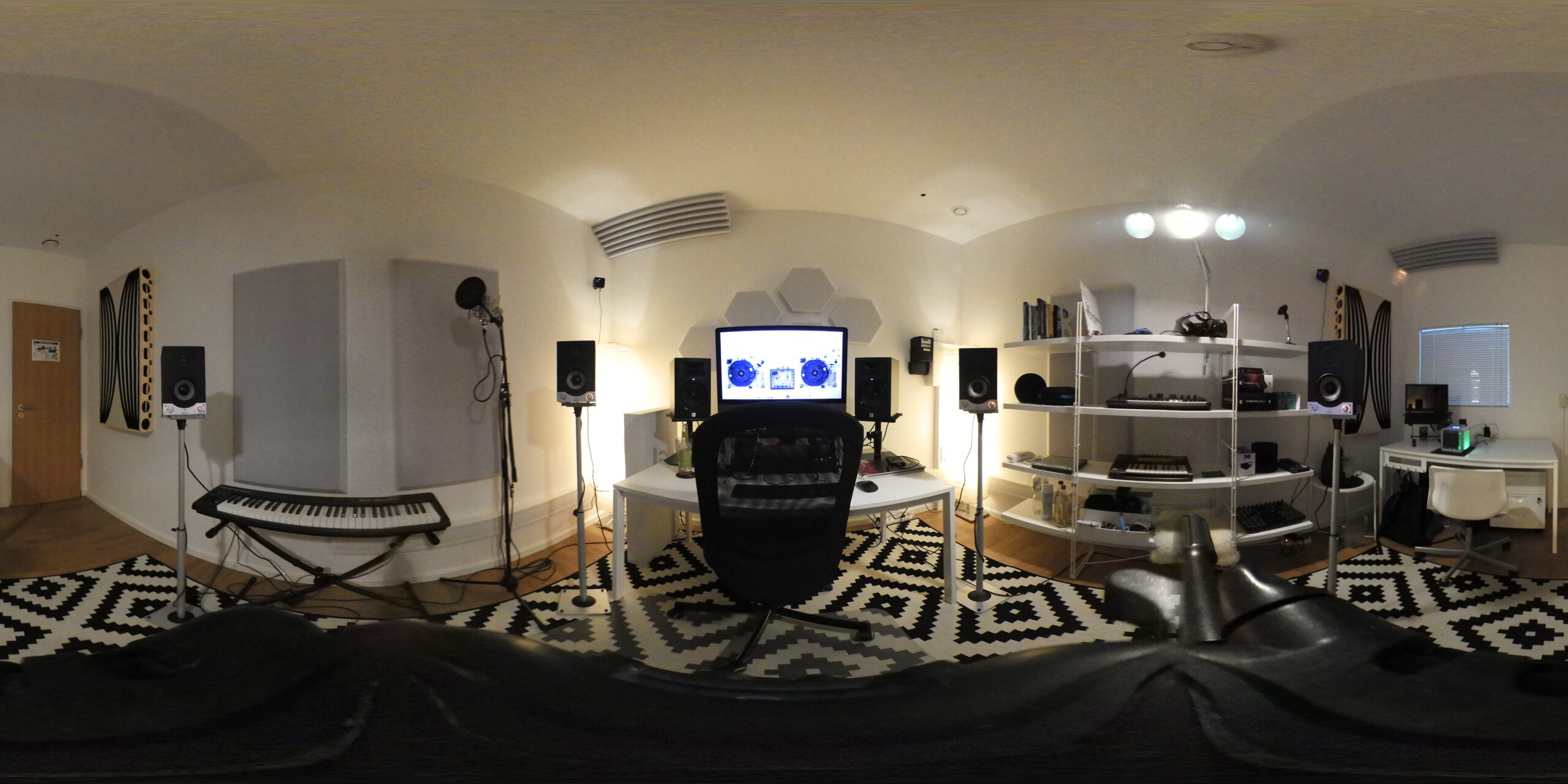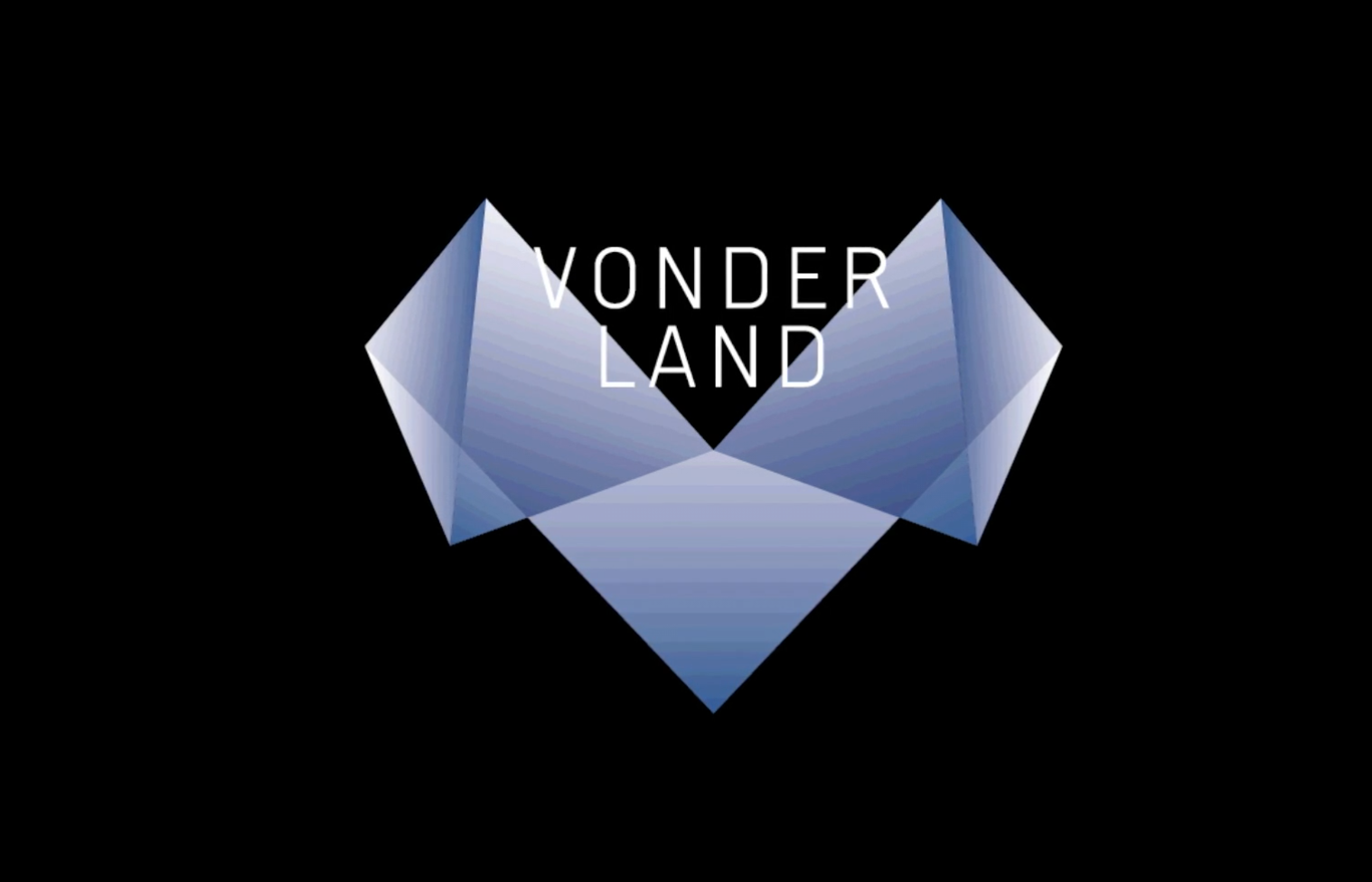After more than 1 year we finally delivered a steady and fun VR experience with lots of differentials than a regular VR experience people are accustomed to.
Vonderland.

First, there’s the multi-sensory part.
Vonderland is multi-sensory in a way that few other experiences are.
-It is a haptic full body experience, meaning that you can interact with real objects into VR with your whole body.
You pick a glass in the real world, the glass appears in VR, for example.
You kick a ball in the real world, it happens in VR too.
-There’s more than just VR images and sounds.
There are moving floors based on low-frequency emissions.
So, for example, when a rock bridge appears, you can actually feel the ground trembling under you.
-There’s also wind and heat, that automatically start when you reach certain points of the experience.
-There’s scent.
You pick a flower and you can smell it. If there’s fire in the room, you can smell it too.

–Vonderland is multi-user, meaning that 2 or more people can play at the same time, and they even need to interact with each other to go further into the experience. And they can talk to each other using the HMDs mics that get the proper reverberations based on each level the player’s in.
Second, beyond multi-sensory, you can start you Vonderland experience at your home, in AR, create avatars, connect with your friend, learn about the history behind it, get the tickets for the “real” VR experience and enjoy.
______________________________________________

As a Sound Designer for the project, I had lots of challenges to overcome.
-How to put sound into haptic objects?
Do they have to sound exactly as in the real world or they must be “larger than life”?
The answer is – larger than life, always. Since you’re stepping into a magic world, you need magical sounds and ambiances.
-How to make people talk to each other and at the same time use the VR ambiances reverberations so that your voice makes the experience even more immersive?
In that particular matter, I had to work together with the code developers in order to bring the reverberations created in Resonance Audio to the HMDs microphones.
Not an easy task, since these mics have a different wiring and connection, that doesn’t go through Unity.
If you play a game with other friends that are in different places, you use TeamSpeak or any other software for that.
And these softwares use a parallel “channel” for the VoIP.
In Vonderland we needed to put the voices inside the game.
Without latency.
-How to create Procedural Audio for some haptic objects?
There’s a level where you pick a glowing ball (in real life a regular plastic sphere with a sensor in it) and need to put this over a pillar so that a haptic flower appears and lead you to the next level. This ball was already glowing inside a dark cave, but the fun of it is when you pick it.
You listen to a sound that changes while you move it around.
You move it up, the pitch gets higher, you move down it gets lower, and you move it away from you, it gets more reverb.
Once again music & code working together.
A code that made the X-Y-Z as a 3D field where the changes happen. Lots of iterations and lots of tests to find the proper sound. Good result in the end.
-How to make the floors move with low-frequency emissions?
Coding again, using a low-frequency speaker connected to the wooden stage. In this case, there is an Arduino device that sends the sound to the speaker at the same time the “magic” is happening in VR. Of course, there’s a specific sound for that, since the trembling must be perceived on our feet and it must be as intensive as the experience you’re having in VR.
When the monster walks and throws things at us, the trembling is fast and intense.
When a rock bridge appears in front of you, the trembling is lighter and not so intense. People need to go through this bridge to accomplish the tasks at a level, so the sound and trembling cannot be something scary.

-How the sound made the experience more interesting and immersive?
Apart from all mentioned above, the ambiances were also harmonically chained. We start the experience in the key of G, and while the experience evolves the ambiances change harmonically. It is almost imperceptible, but when you get into different levels you can definitely feel that you’re enthusiastic and compelled to go for it.
Also, some important events happen behind the player, so we needed specific sounds to tell players that something happened behind them. Magic sounds. :). Magic treble 3D positioned sounds.
_______________________________________________

The idea behind Vonderland is to show that VR experiences aren’t lonesome. You can interact with real people and real objects even in VR, making it also a social experience after all.
And that you can create any story inside a VR world and make it happen in a different and thorough environment.
Why not having the Vonderland platform adapted to create a social VR experience of a new movie? Or even a new product?
It is still a work in progress, meaning that there will be more levels, more interaction, more expansions and more fun.
But the main concepts are there.
Take a look:
Cheers,
Billy


Deixe um comentário